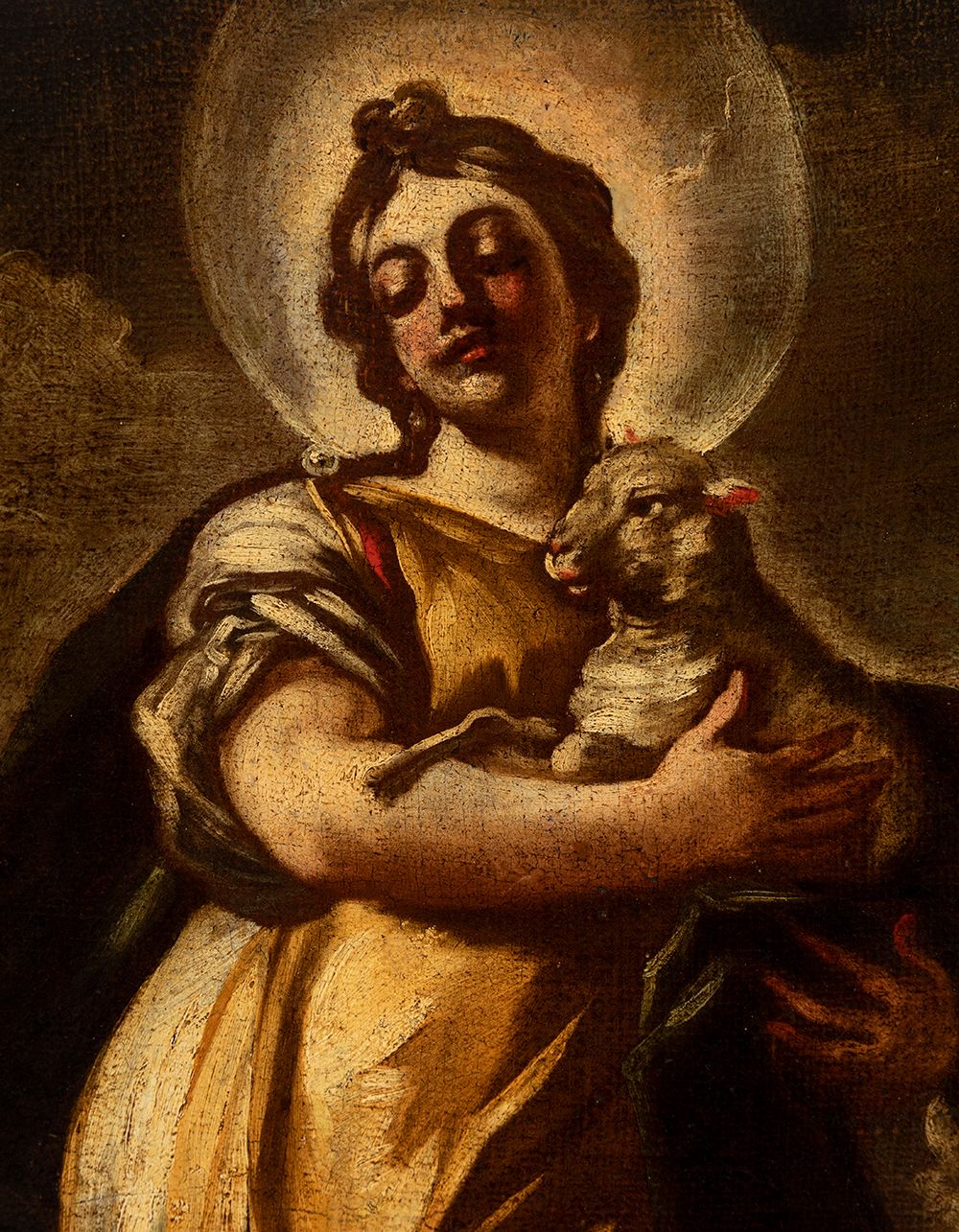Description
Attributed to FRANCESCO SOLIMENA (Italy, 1657 - 1747).
Attributed to FRANCESCO SOLIMENA (Italy, 1657 - 1747). "Saint Agnes". Oil on canvas. Relined It presents old restorations. Measurements: 50 x 36 cm. This work is conceived to be placed in a high area, as the artist has lengthened the anatomical canon of the protagonist, as well as treating the composition from a low point of view, deforming the image, so that it can be appreciated in a coherent way from a low point of view. The artist presents a woman with rounded, volumetric forms as the protagonist of the scene. She is located in the centre of a composition with a neutral and indeterminate background, and has no iconographic element beyond her halo of sanctity and the lamb she holds in her arms. It is possible that this is a representation of Saint Agnes, who belonged to a family of Roman nobility and was brought up under the precepts of early Christianity. It was at the age of twelve, under the rule of Emperor Diocletian, that she was denounced by several young men, whom she had rejected because of her chastity and religious devotion. Saint Agnes was then condemned by Sempronius to be dragged naked through the street to a brothel. It is said that during this torment her hair grew to cover her body, and that the men who tried to abuse her were blinded. After trying to kill her at the stake, Agnes was beheaded. From its formal characteristics we can relate this work to the hand of Francesco Solimena, an Italian painter of the late Baroque period, the principal representative of the Neapolitan school of the first half of the 18th century. Francesco Solimena trained with his father, also a painter, and developed his career in Naples, where he settled in 1674. There he furthered his training with De Maria, in whose studio he became familiar with the more advanced Baroque style of Cortona, Lanfranco, Preti and Giordano. His early works reveal a clear affinity with the Roman Baroque as well as with the more recent Neapolitan pictorial tradition. Later, seeking to develop an alternative to Giordano's fanciful language, Solimena approached the darker art of Mattia Preti, insisting on greater plasticity. Thus the shading that characterises his figures began to appear in his work. He soon became the visible head of the Neapolitan school and was later influenced by the classicism of Maratta, which led him to seek a greater intensity in his drawing with academic accents. Works by Solimena are now in the Museo del Prado, the Hermitage in Saint Petersburg, the J. Paul Getty in Los Angeles, the Kunsthistorisches in Vienna, the Louvre in Paris, the Metropolitan in New York, the National Gallery in London and the Rijksmuseum in Amsterdam, among other public and private collections throughout the world.
15
Attributed to FRANCESCO SOLIMENA (Italy, 1657 - 1747).
